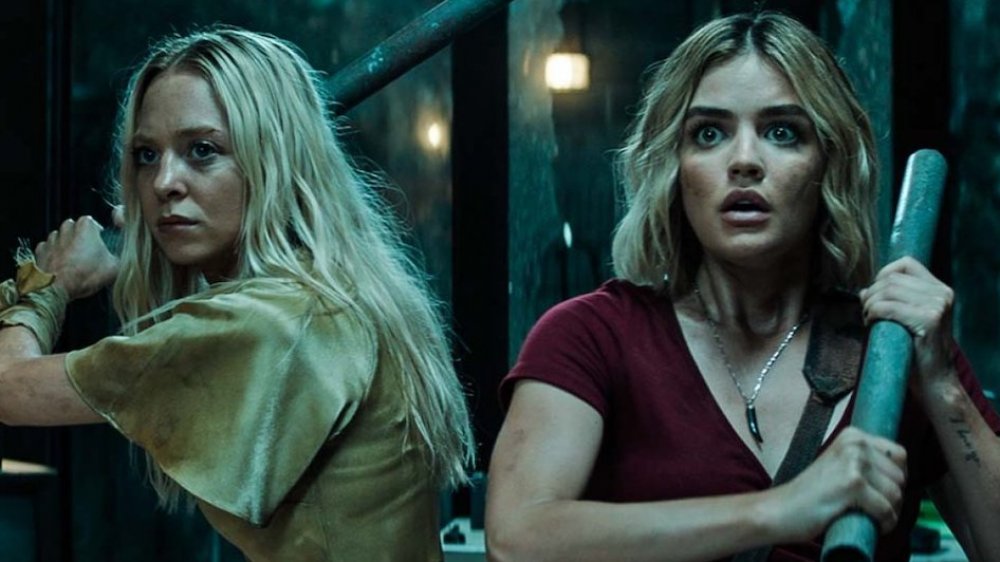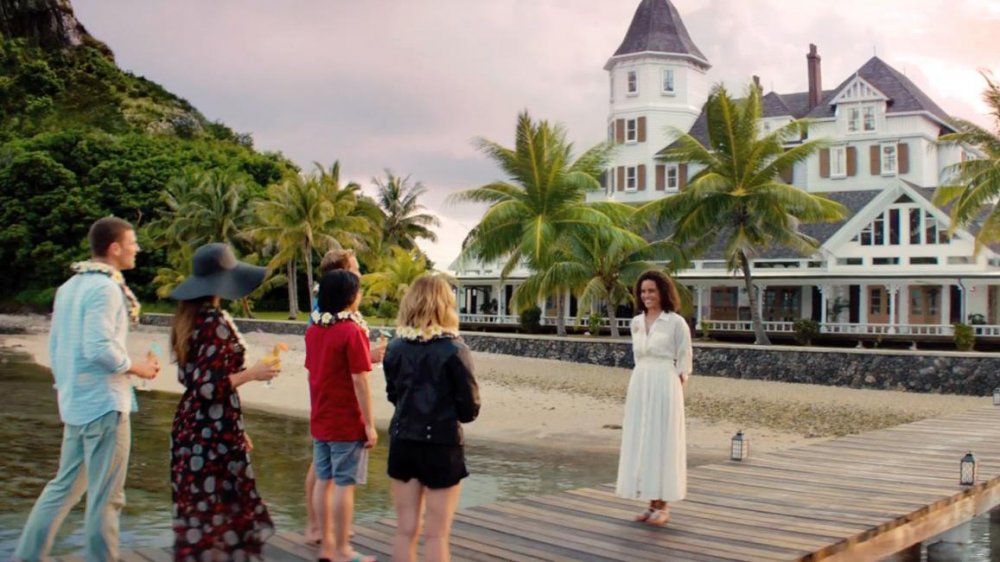What It's Really Like To Make A Horror Movie For Blumhouse - Exclusive
If you've seen a horror movie in theaters over the past decade, there's a good chance it came from Blumhouse Productions. The prolific production company has been at the forefront of the horror scene since Paranormal Activity debuted in 2009, and is responsible for everything from Insidious to The Purge to Get Out to director Jeff Wadlow's latest feature, Fantasy Island.
The secret to Blumhouse's success? Small budgets, quick shoots, and lots of creative control, according to Fantasy Island's cinematographer Toby Oliver. Oliver would know, too. The veteran cinematographer has filmed five movies for the Blumhouse, including Fantasy Island.
"I like working for Blumhouse," Oliver told Looper in a recent interview. "I think they have a great way of working and involving and collaborating with people like me."
In short, Oliver said, Blumhouse's production model offers the freedom to make the movies they want to make: "Jason Blum, the head of Blumhouse, has a hand in everything, but once he picks a creative team and picks a director and a writer they go off. Blumhouse doesn't tend to interfere too much with the creative process [...] They get quite a lot of creative freedom that they may not get on a bigger picture where there are a lot more fingers in the pie."
There are some trade-offs. As mentioned before, money is a big one. "They're usually fairly low-budget, Blumhouse movies, some of them are very low-budget," Oliver noted, which is one reason why the studio can afford to take risks. The turnaround is quick as well. Oliver shared that most Blumhouse movies shoot in about four weeks, so if something goes wrong — and in filmmaking, it often does — that doesn't leave a lot of room on the schedule to adjust.
It's not like Blumhouse is completely hands-off, either. As Oliver noted, "They come back in on the post-production side and have their say in how the movies are put together. Sometimes, they'll reshoot some scenes or change a few things." Working with Blumhouse isn't like being handed a blank check, even a small one.
Still, even that has some benefits. "Because they can keep the budget low, there's always some extra money to do the reshoot later on," Oliver explained. Besides, it's not like they're re-filming the entire movie. According to Oliver, most of Blumhouse's reshoots only add up to a few minutes, and tend to make the movie better: "I think it's great having that freedom to be able to do that, to tweak the movie to make it as good as possible."
It's a formula that works, as Blumhouse's long list of critically-acclaimed films (in addition to Get Out, the company also produced the non-horror films Whiplash and BlacKkKlansman, both of which won Oscars) and hit horror franchises. "They let the creative process happen and there's a freedom there, which is great even though you don't have a huge amount of money," said Oliver.
Fantasy Island: A case study in Blumhouse filmmaking
As Oliver tells the story, production on Fantasy Island was, in many ways, a typical Blumhouse production. It was filmed in a mere 27 days, not counting reshoots; it had a lower budget than many of the high-profile films playing at your local theater; and it's a straight-up weird and risky project. Starring Portia Doubleday, Lucy Hale, Ryan Hansen, Parisa Fitz-Henley, Michael Peña, Michael Rooker, Austin Stowell, and Jimmy O. Yang, Fantasy Island is an adaptation of a half-remembered television show from the '70s. Structurally, it's like four films crammed into one, and it doesn't truly lean into its horror side until the final act.
Plus, the shoot didn't go according to plan at all. In fact, that's how Oliver got involved. "I was brought on very late in the process, basically when they'd just started shooting, because the original director of photography wasn't able to continue on the project," he detailed. Oliver had worked with Blumhouse many times before — he was the cinematographer on Blumhouse films like Get Out and the two Happy Death Day movies, and supervised reshoots on others — so when trouble hit, the studio got him on the phone.
Because of the tight schedule, Oliver had to hit the ground running. "It was a case of... picking up the reigns and figuring out what Jeff [Wadlow] really wanted and figuring out what they'd done so far, and then sort of powering through and getting the job done," he said. "I wouldn't say that it was the easiest thing in the world... but actually it was a really great crew and Jeff's an amazing director."
In addition, the budget and schedule allowed the crew to travel to Fiji, which stood in for Fantasy Island's tropical paradise, but meant that the whole shoot had to take place there, including work that would normally be done on sound stages. The problem? Fiji doesn't have any. "If you were shooting with a big budget and you're shooting in LA or Atlanta and you had a giant stage, you'd just build [all the sets] and it's all easy," Oliver explained. "But in Fiji, there's real challenges with the space and what's available there."
As a result, the Fantasy Island crew was forced to build complex sets, like the caves that host the film's climactic chase sequence, in small warehouses with extremely low ceilings that left little room for the camera to move around. Oliver and his team were forced to improvise, cobbling together new camera rigs and hoping that everything would work out.
For the most part, it did. Fantasy Island hasn't received great reviews, but there's no denying that it's an unconventional film guided by singular vision. Besides, with a $22 million opening weekend, it's already earned back its $7 million budget and then some, making it a financial hit even if it's not a critical one. In other words? For better or worse, Fantasy Island is a Blumhouse movie through and through.
Fantasy Island is in theaters now.

